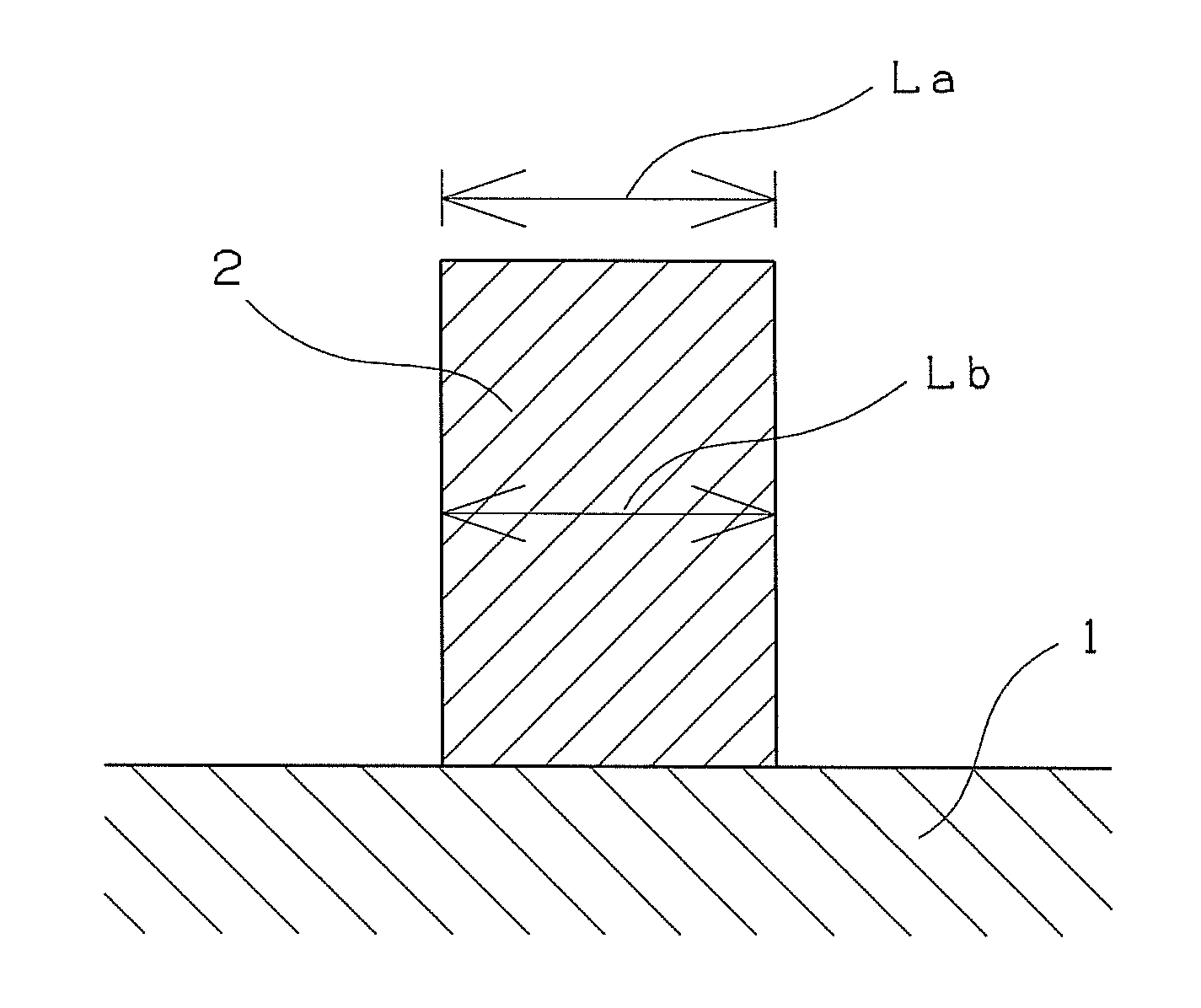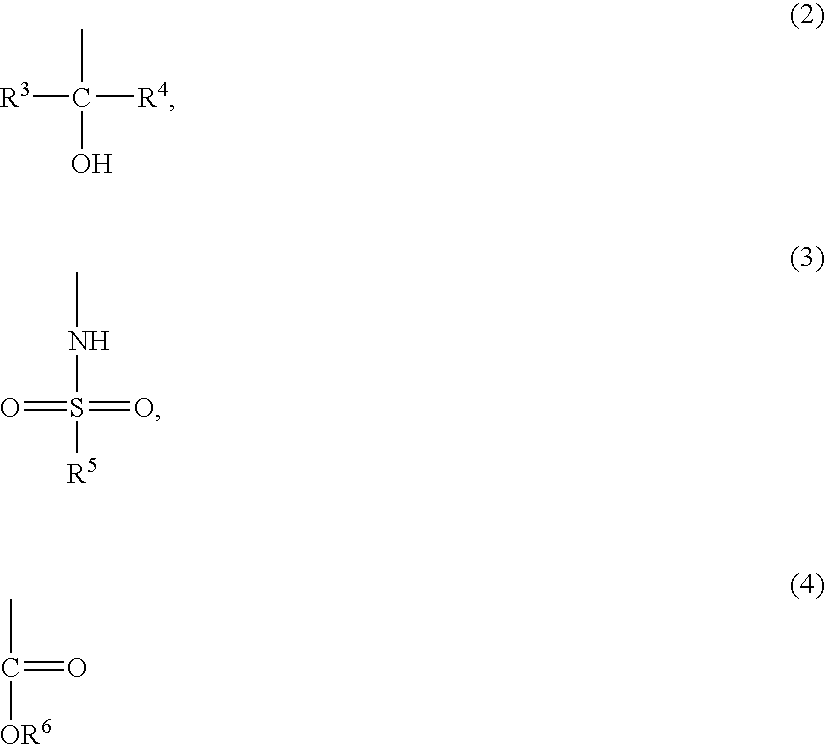Upper layer-forming composition and photoresist patterning method
a composition and composition technology, applied in the field of upper layer-forming composition and photoresist patterning method, can solve the problems of polluting the surface of the projection aligner lens, reducing the resolution of photoresist, etc., and achieve the effect of suppressing the elusion of photoresist components and reducing the amount of composition to be applied homogeneously on a silicon wafer
- Summary
- Abstract
- Description
- Claims
- Application Information
AI Technical Summary
Benefits of technology
Problems solved by technology
Method used
Image
Examples
examples
[0138]The present invention will be described in more detail by Synthesis Examples of the copolymer (polymer) and Examples of the upper layer-forming composition. However, these examples should not be construed as limiting the present invention. In the examples, “part” refers to “part by mass” unless otherwise indicated.
synthesis example
Resin Synthesis Example
[0139]Resins (A-1) to (A-10) which can form a film stable in water during exposure to radiation and is dissolved in a developer after resist pattern formation were synthesized according to the method described below. Mw and Mn of the resins (A-1) to (A-10) were measured by gel permeation chromatography (GPC) using GPC columns (“G2000HXL”×2, “G3000HXXL”×1, and “G4000HXL”×1, manufactured by Tosoh Corp.) in a high performance GPC apparatus (“HLC-8120” manufactured by Tosoh Corp.) under the following conditions; Flow rate: 1.0 ml / minute, eluate: tetrahydrofuran, column temperature: 40° C., standard reference material: monodispersed polystyrene.
[0140]The radically polymerizable monomers used for the synthesis of the resins are shown in the following formulas (M-1) to (M-6), (S-1), and (S-2).
[0141]
[0142]The monomer solutions were prepared by dissolving monomers of a weight corresponding to mol % shown in Table 1 and 2,2′-azobis(methyl-2-methylpropionate) as an initi...
examples 1 to 30 and 37 to 48
and Comparative Examples 1 to 11
[0153]Upper layer-forming compositions for use in immersion lithography were produced using the resins obtained in the above examples. 4 g of the solid component of each of the resins shown in Table 1 in turn and 96 g of a solvent or a mixture of solvents at a ratio shown in Table 4 or Table 5 were mixed and stirred for two hours. The mixture was filtered through a filter with a pore size of 200 nm to obtain a solution. In Table 4, DBE stands for dibutyl ether, 4M2P stands for 4-methyl-2-pentanol, and DIAE stands for diisoamyl ether. In Tables 4 and 5, the solvent ratio for mixed solvents is shown by weight. The upper layer-forming compositions obtained were evaluated by the following methods. The results are shown in Tables 4 and 5.
PUM
| Property | Measurement | Unit |
|---|---|---|
| viscosity | aaaaa | aaaaa |
| viscosity | aaaaa | aaaaa |
| viscosity | aaaaa | aaaaa |
Abstract
Description
Claims
Application Information
 Login to View More
Login to View More - R&D
- Intellectual Property
- Life Sciences
- Materials
- Tech Scout
- Unparalleled Data Quality
- Higher Quality Content
- 60% Fewer Hallucinations
Browse by: Latest US Patents, China's latest patents, Technical Efficacy Thesaurus, Application Domain, Technology Topic, Popular Technical Reports.
© 2025 PatSnap. All rights reserved.Legal|Privacy policy|Modern Slavery Act Transparency Statement|Sitemap|About US| Contact US: help@patsnap.com



